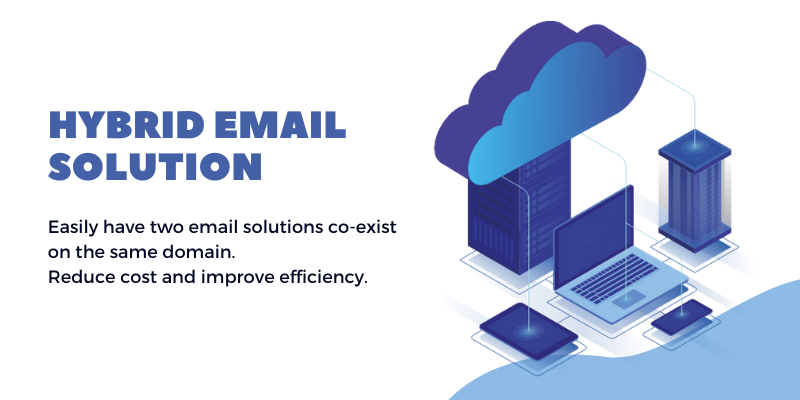In today’s internet age where email is considered a mission-critical system in almost all organizations that employ email, whether to Host Emails On-premise or in a Cloud solution is a perennial debate.
To understand Hybrid email solutions, let’s first understand the importance of email and IT resources for systems/servers.
Why do big companies prefer on-premise email solution?
Many companies, particularly larger senders, have developed their own custom email solution on-premise mainly because their IT Team feels more comfortable and confident having complete control over the system and its operations in-house as it is installed locally, on a company’s own computers and servers.
The biggest factor why these companies are still not making the shift to Cloud is because during the internet boom in India during the 2000 – 2005 many on-premise solution vendors had provided support and complete integration of email systems with internal CRM/ERP systems.
Till now these email systems are running smoothly and are updated with very minor security patches and upgrades.
The cost of enterprise Internet bandwidth or leased line in India is among the highest in the world, on a per Mbps basis. Therefore companies tend to restrict and ration the usage of precious Internet connections, to a select few employees.
Following are the approx leased line rates in 2020
| Speed | Cost (INR) / Month |
|---|---|
| 2 Mbs | 7000 – 8000 |
| 10 Mbs | 25000 – 30000 |
| 30 Mbs | 40000 – 60000 |
But this could be a big problem…….
It’s because today email has grown quickly and has become an integral part of our decision making process. We need it available 24×7 across devices and platforms.
That means the on-premise email systems connectivity must be available across ISPs and Internet connections, which will need continuous IT teams man hours to manage bandwidth, firewall and other operational resources.
Let’s not forget the traditional arguments surrounding cloud costs, service maturity, and a general distrust over outsourcing critical infrastructure.
So how can we ease this task and make the shift to Cloud slowly?
The answer is “Hybrid Email Solution”. Hybrid simply means two or more operations/services running in parallel and smoothly.
Thus in a Hybrid Email Solution a company can opt-in for an on-premise and cloud email service for their employees at the same time and have complete control over the services and its operations.
Hybrid solution combines best of both on-premise as well as cloud mailing solution. You can host a few users on on-premise and rest all of the users on Rediffmail Pro platform.
Typically in an organization, top executives would require an email solution with advanced features like access to emails, contacts and calendar on mobile devices while other users would just need a basic email facility.
Benefits of Hybrid Email Solution
- Cost effective
- Pay for what you use
- Ancillary services
- Phased migration
The table below summarizes the most common advantages and disadvantages of both the solution:
| On premise | Cloud email Solution |
|---|---|
| Control over system and data | Low cost of ownership |
| Feature rich solution | No infrastructure requirements |
| Customization according to business needs | IT Team can focus on core projects |
| Reuse of existing infrastructure | No maintenance cost |
| Infrastrcture not shared with others | Can scale up easily |
Conclusion
Hopefully, the answer is more clear now.
The advantages of hybrid are real and many enterprise-level companies are seeing the results from switching to a true hybrid solution – as it offers the customers the best of both worlds by allowing them to maximize the benefits and control of both a cloud delivery model and those of the on-premise model.




